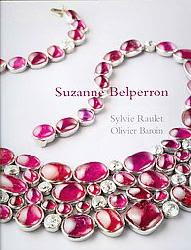


Suzanne Belperron was an iconic Parisian designer who insisted “Mon style est ma signature.” Her jewelry embodies a sensual elegance as well as an intellectual fascination that appealed to a sophisticated clientele from socialites to stage and screen stars. Working until the 1960’s she never signed a piece believing that her work was so distinctive that the jewel itself was her signature. Her pieces can be identified by the marker’s mark of Darde et Groene, who produced her designs, additionally many of the pieces she made in partnership with Bernard Herz are signed “Herz-Belperson”. However, it takes a trained and discerning eye to identify her unsigned and unmarked creations, and since almost no archives remain. Her works are immensely rare on the market. A very private person, Belperron burned her personal papers and photographs, and, after years of obscurity, has only recently been rediscovered.
Belperron’s customers were devoted to the undulating forms the unusual, large stones she incorporated into her jewels, and the personal attention they received; Belperron often designed jewels to suit the nature of a particular client. She was completely in tune with what was wanted
by a younger generation, mixing precious and semi precious stones within curvaceous and sensual designs, never producing a flat jewel. Her designs were highly imaginative and distinctive, drawing inspiration from nature and exotic world cultures. Fiercely independent and opinionated she insisted that her clients came in person to her small shop at Rue de Chateaudon. Elsa Schiapparelli, who appeared in a 1933 issue of Vogue wearing Belperron’s jewelry, was one of the designer’s many prominent clients along with Fred Astaire, Frank Sinatra, the Duchess of Windsor, Princess Aha Khan, Josephine Baker and Colette to name a few.
When Belperron died, in 1983, she bequeathed several thousand original drawings and jewelry molds to a friend until the entire estate in 1999, along with commercial rights to produce her work was bought by New York based Ward Landrigan and his son Nico, owners of Verdura.
But in 2007 jeweler and historian Olivier Baroin was allowed into a small apartment in Paris that had apparently not been open since 1983, only to discover in musty drawers and cabinets a trove of documents previously believed to have been destroyed by Belperron before her death.
So now we can enjoy her designs as these treasures have been unearthed and the book has drawings and photographs for all to enjoy.
I love a story like this as years later the debate of who’s really in charge of her legacy rages on but we all get to enjoy her wonderful designs.


















